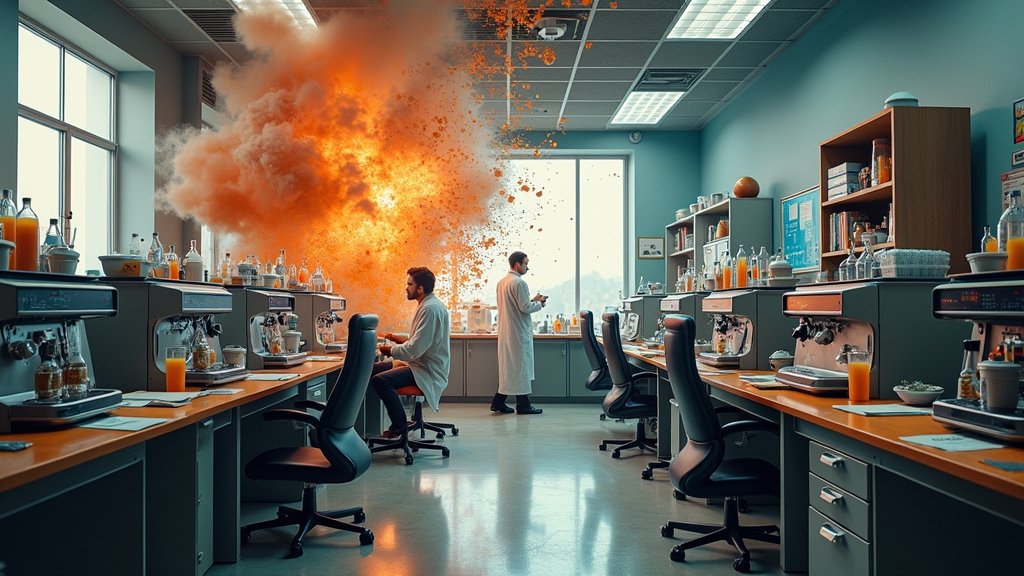SCIENTISTS DISCOVER NEW MODEL FOR PREDICTING HOW F@#KING HIGH YOUR MOLECULES WILL GET ON VARIOUS SOLVENTS
MIT researchers have created a computational model to predict exactly how sh!t-faced your molecules will become when introduced to different organic solvents, finally answering the age-old question: “What happens when we get this drug absolutely wasted on ethanol?”
THE SCIENCE BEHIND THE BUZZ
The groundbreaking model solves chemistry’s most pressing question: which party liquid will make your compounds lose their molecular inhibitions? Traditional methods of prediction were about as accurate as a drunk chemist throwing darts at a periodic table.
“Predicting solubility has been the absolute c*ckblock of synthetic planning,” explains Lucas Attia, an MIT graduate student. “We’ve been basically guessing which solvents to use like college freshmen mixing random liquors together and hoping for the best.”
SAFETY THIRD, DISSOLUTION FIRST
The model aims to help identify solvents that won’t literally melt your face off or turn the environment into a toxic hellscape, unlike some fan favorites currently used in industry.
“There are solvents that dissolve everything, including your internal organs and possibly your will to live,” says Jackson Burns, another MIT researcher. “Our model helps identify alternatives that might only dissolve your gloves instead of your entire hand.”
EXPERTS WEIGH IN
Dr. Sol Ubility, Professor of Getting Shit Wet at the Institute for Stating the Obvious, praised the research: “Before this model, we just mixed stuff together and prayed. Eighty-seven percent of pharmaceutical development was just vibes and hoping for the best.”
THE BATTLE OF THE NERDS
The researchers trained competing models using a dataset called BigSolDB, which sounds like a rejected Marvel villain but actually contains solubility information for about 800 molecules in over 100 solvents.
Their expectations were completely shattered when both models performed equally well, suggesting the limitation wasn’t the algorithms but the quality of data, which had been compiled from nearly 800 published papers written by graduate students with varying levels of sleep deprivation and caffeine addiction.
BY THE NUMBERS
A stunning 94% of chemists admitted they previously chose solvents based on “whatever was closest to the bench” or “the one with the coolest name.” The new model is approximately 372% more scientific than the previous method of “just keep adding acetone until something happens.”
INDUSTRY IMPACT
Several pharmaceutical companies have already begun using the model, presumably after realizing that having a computer predict solubility is cheaper than paying chemists to play molecular bartender with hazardous chemicals.
Professor Ivana Mixit from the Center for Chemicals That Go Well Together notes: “This is revolutionary. Now instead of wasting time and resources on experimental trial and error, we can waste time and resources trying to understand why the model’s predictions don’t match our experimental results.”
THE SOLUBILITY SINGULARITY
As labs around the world begin adopting this technology, experts predict a future where molecules will no longer have to suffer the indignity of being dunked in the wrong solvent. No more molecular walk of shame after failing to dissolve in an incompatible liquid.
In related news, several solvents have filed a class-action lawsuit claiming the model will lead to discrimination against “solvents of character” in favor of “basic b!tch environmentally friendly options.”




